“Because you think the same thing happened to the Staneks.”
“Cassandra Coyle thought so too. She told me the case haunted her so deeply that she was inspired to write a movie about it.”
“Her horror film? Mr. Simian ?” said Frost.
Bonnie gave an ironic laugh. “Sometimes the only way to tell the truth is through fiction.”
“But her colleagues told us Mr. Simian is about a girl who goes missing. It has nothing to do with kids being molested.”
“The movie is also about how memories get twisted over time. How the truth is simply a matter of your point of view.” Bonnie sat straighter. Back in control. “Have you heard of Dr. Elizabeth Loftus?”
“The psychologist?” said Frost.
Jane glanced at her partner. “How do you know that?”
“Alice told me about her,” said Frost. “The subject came up in one of her law school classes, about witness testimony and whether it’s reliable.” He looked at Bonnie. “Alice is my wife.”
Was your wife, Jane wanted to say but didn’t.
“Back in the mid-nineties,” said Bonnie, “Dr. Loftus published a groundbreaking article in Psychiatric Annals . It described an experiment she conducted using twenty-four adults. In the study, her subjects were reminded of four different events from their childhoods, as recounted by close relatives. But only three of those four events actually happened. One was purely fictional. The subjects were asked to recall details about each of the four events. As the weeks went by, they remembered more and more, and their details became quite elaborate. Even for the event that never happened.
“After the study was over, five of those twenty-four people could not identify which of the four events was the fictional one. They still believed it had really happened to them. In those five people, Dr. Loftus had successfully implanted a false memory. All it takes to implant a memory is to keep telling someone that an event actually occurred. Talk about it as if it’s real, and refer to it again and again. Before long, your subjects will start filling in their own details, adding color and texture, until the memory is as vivid to them as real life. So vivid that the subjects swear it’s true.” She sank back in the chair. “Dr. Loftus’s study was done on adults. Imagine how much easier it would be with children. You can make a young child believe almost anything.”
“Like flying tigers and secret rooms in the basement,” said Frost.
“You’ve read the children’s interviews. You know how outlandish some of their claims were. Animal sacrifice. Devil worship. And, remember, some of those children were only five or six years old, hardly a reliable age, yet their testimony helped send the Stanek family to prison. It was the modern version of the Salem witch trials.” She looked back and forth at Jane and Frost. “Have you met the prosecutor, Erica Shay?”
“Not yet,” said Jane.
“The Apple Tree trial made her career. She couldn’t get a guilty verdict for the Lizzie DiPalma abduction, but she still managed to send the satanic Staneks to prison. Winning was all that mattered to her. Not the truth. Certainly not justice.”
“That’s a pretty serious accusation,” said Frost. “You’re saying the prosecutor knowingly sent innocent people to jail.”
Bonnie nodded. “That’s exactly what I’m saying.”
“Trust me. Martin Stanek was guilty as hell,” said Erica Shay.
At fifty-eight, the prosecutor looked even more formidable than she had in the news clippings from the Apple Tree trial twenty years earlier, when she’d cut a steely figure in tailored skirt suits, her blond hair swept back in a severe chignon. Two decades had whittled away any trace of softness from her face, carving it into sharp angles with jutting cheekbones and a beak-like nose, and her gaze was direct and battle-ready.
“Of course Stanek claimed he was innocent. All the guilty ones do.”
“So do the innocent ones,” said Jane.
Erica leaned back in her chair and gazed coolly across her oak desk at the two detectives sitting in her office. It was a nicely appointed room, one wall covered with her diplomas and awards and a gallery of photos: Erica with a succession of Massachusetts governors. Erica with two senators. Erica with the president. The wall announced to everyone who entered: I know important people. I’m not to be trifled with.
“I simply did my job. I presented the evidence against Martin Stanek in court,” said Erica. “And the jury decided he was guilty.”
“Of molestation,” said Jane. “But not of Lizzie DiPalma’s abduction.”
Erica’s eyes flashed with annoyance. “That was the jury’s mistake. I didn’t doubt for an instant that he killed her. We all know he did it.”
“Do we?”
“All you have to do is look at the evidence. Nine-year-old Lizzie DiPalma goes missing on a Saturday afternoon. She leaves her house, wearing her favorite knitted hat with silver beads. She gets on her bike, rides away, and she’s never seen again. Her bike’s found at the roadside a mile and a half away. Two days later, Lizzie’s hat — very distinctive, bought during a family trip to Paris — is found on the Apple Tree school bus by one of the kids. Now tell me, how does that hat end up on a vehicle that only Martin Stanek drove? A vehicle that was supposedly parked and locked in the Stanek driveway the entire weekend? Traces of Lizzie’s blood were found on the floor of that same bus.”
“Lizzie cut her lip on the bus a month earlier. Her mother shared that detail at trial.”
Erica gave a snort. “Lizzie’s mother was an idiot. She never should have revealed that information.”
“It was the truth, wasn’t it?”
“All it did was put reasonable doubt in the minds of the jurors. It made them question everything else we presented. Then the defense concocted the absurd theory that someone else abducted Lizzie. That the girl might still be alive.” Erica shook her head in disgust. “At least we got a guilty verdict for the abuse charges. Twenty years in prison was less than I hoped for, but that’s twenty years when Stanek couldn’t hurt anyone. As soon as he walked free, it didn’t take him long to go right back to killing. He wanted revenge. Those children told the truth, and it sent him to prison.”
“The truth? Some of the claims were pretty far-fetched,” said Frost.
“Children exaggerate. Or they get a few details wrong. But they don’t lie, not about abuse.”
“They can be coached. Made to believe—”
“Don’t tell me you’re defending him?”
Her outburst made Frost flinch back in his chair. In the courtroom, this woman would probably fight like a gladiator, quick to strike, never retreating. Jane thought of young Martin Stanek, twenty-two years old, frightened, and doomed. This was what he faced on the witness stand, this relentless adversary circling in for the kill.
“I interviewed every one of those children,” said Erica. “I spoke to their parents. I examined the bruises and scratches on Holly’s arms. She’s the one who found Lizzie’s hat on the bus. She was the one brave enough to tell her mother what was happening at that daycare. Then Billy Sullivan confirmed it, and I knew it had to be true. The Staneks were a nest of vipers, and their victims were so terrified, they didn’t dare speak up until Holly and Billy did. It took weeks of interviews, repeated questioning, but little by little the secrets came out. What the children saw, and what was done to almost all of them.”
“How many children are we talking about?” said Jane.
“Many. But we chose not to use all the statements.”
“Because their stories were even more outlandish?”
Читать дальше


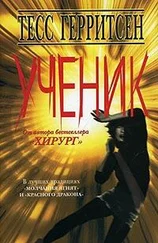


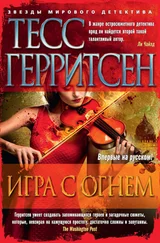
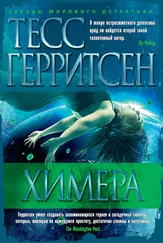
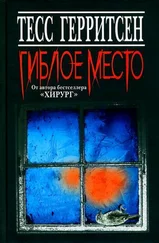

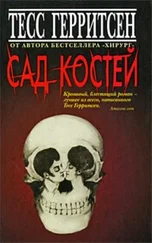
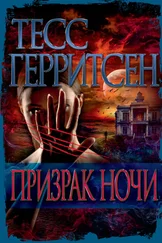
![Тесс Герритсен - Считать виновной [litres]](/books/395939/tess-gerritsen-schitat-vinovnoj-litres-thumb.webp)
![Тесс Герритсен - Двойник [litres]](/books/427680/tess-gerritsen-dvojnik-litres-thumb.webp)